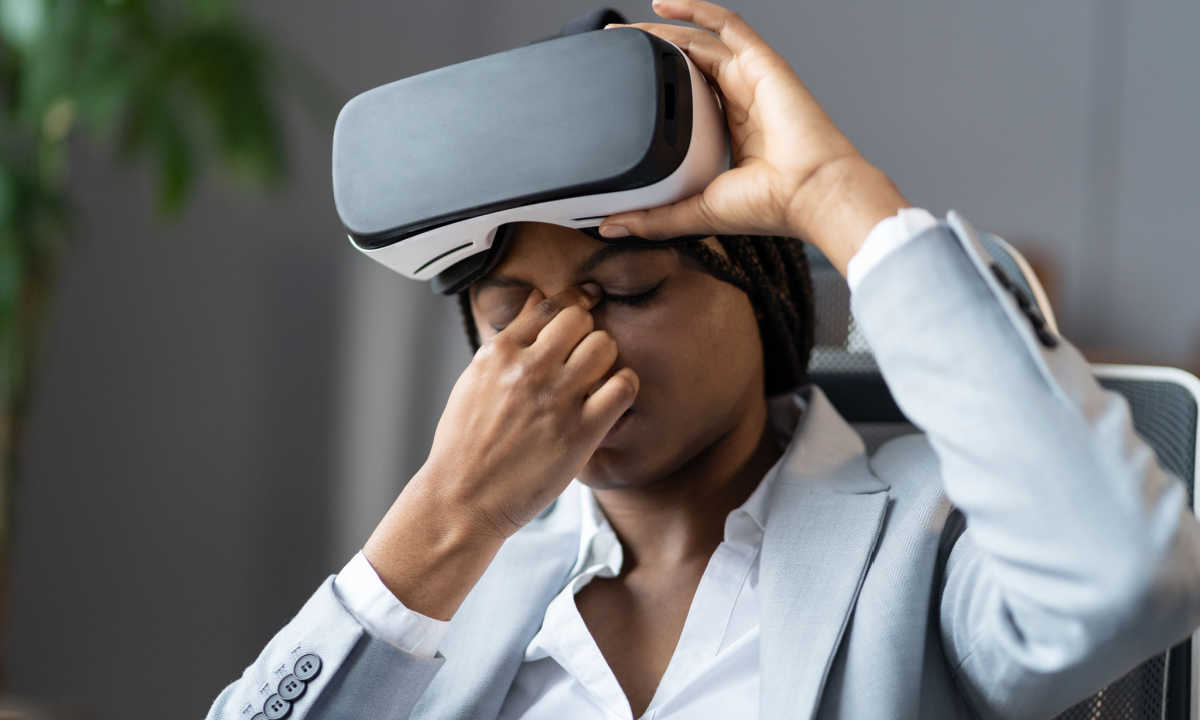Consumers Are Getting Sick of the Metaverse — Really

We’re not just going to play in the metaverse, we’re going to shop, buy, sell, socialize and even work in the 3D virtual realities. Just ask any top consumer brand’s marketing executives.
But marketers and managers alike may be in for a rude awakening as the small-but-growing metaverse ecosystem runs into a growing problem with cybersickness, a digital version of seasickness that appears to be far more common with virtual reality headsets.
Publications ranging from Glamour to Neuroscience News have started writing about it, but cybersickness isn’t just a headline-grabbing condition
Clinical studies published by the National Institutes of Health (NIH) and Nature bear titles like “Reducing Cybersickness in 360-Degree Virtual Reality” and “Clinical predictors of cybersickness in virtual reality (VR) among highly stressed people.”
“Despite the technological advancements in Virtual Reality (VR), users are constantly combating feelings of nausea and disorientation, the so-called cybersickness,” the abstract of the latter began. “Cybersickness symptoms cause severe discomfort and hinder the immersive VR experience.”
The Nature study noted that cybersickness isn’t just something that could affect metaverse gaming.
“The use of virtual reality (VR) in the treatment of psychiatric disorders is increasing, and cybersickness has emerged as an important obstacle to overcome,” it said, warning that “the clinical factors affecting cybersickness are still not well understood.”
9 to 5
Companies ranging from Meta and massively multiplayer online (MMO) game maker Fortnite to blockchain-based metaverse platforms like Decentraland and The Sandbox are all claiming it’s where we’ll all spend our off-work hours, many employers are planning to have us spend working days there, too.
Meta CEO Mark Zuckerberg has been aggressively pitching his metaverse dreams as a place for workers to collaborate as well as hang out after hours. And “Web3” — actually a privacy-focused, blockchain-based future internet — has become so trendy that marketers and increasingly C-suites have felt requires a strategy and even a chief metaverse officer.
On the 9-to-5 front, automakers have been early adopters, with companies ranging from hypercar maker Rimac Bugatti to BMW teaming with graphics chip maker Nvidia to build metaverse-style work environments that handle everything from physical design tools and meeting spaces to marketing environments where potential buyers can test drive vehicles and experience interior design choices.
But others ranging from manufacturing multinational Siemens to consulting giant Deloitte are using Nvidia’s Omniverse Cloud as a base on which to build these mini-metaverses for clients.
See: Nvidia, Deloitte Beat Meta to Punch With Enterprise VR Offering
According to an April article in the Harvard Business Review, “the metaverse seems set to reshape the world of work in at least four major ways: new immersive forms of team collaboration; the emergence of new digital, AI-enabled colleagues; the acceleration of learning and skills acquisition through virtualization and gamified technologies; and the eventual rise of a metaverse economy with completely new enterprises and work roles.”
Too Much Metaverse
Despite low actual user numbers, brands like Wendy’s and Samsung have set up shop — Wendyverse is located in Meta’s Horizon Worlds and the electronics giant’s 837X event space in Decentraland — and many more are piling in.
Read more: Samsung Welcomes Users to Its Metaverse at CES 2022
Yet a recent study in Coburg University in Germany found dismal results. Two of 18 volunteers who spent one full work week in a VR headset version of the metaverse dropped out with cybersickness symptoms on the first day.
The remaining 16 said they felt their workload increased 35%, frustration was up 42%, eyestrain almost 50%, and participants’ self-rated workflow went down by 14% and their perceived productivity dropped by 16%.
Leaving aside the bad work environment results, it raises a serious question about shopping and socializing in the metaverse: After a full workday, who’s going to want to head to the metaverse to order dinner or shop for shoes?
It doesn’t bode well for business or commerce in the metaverse.
